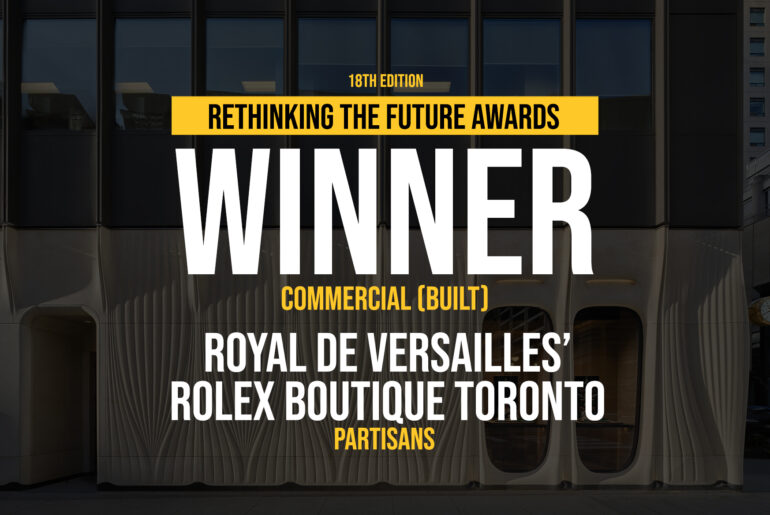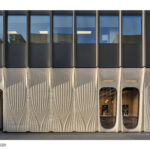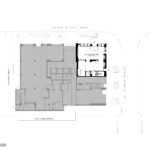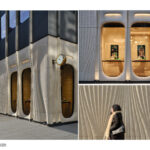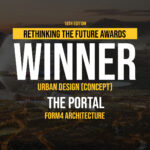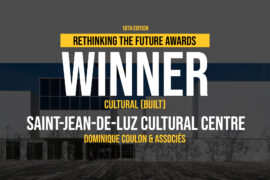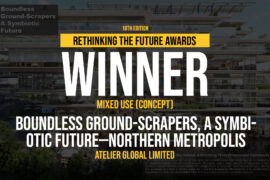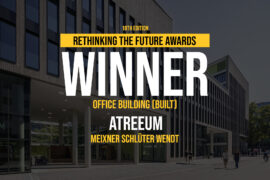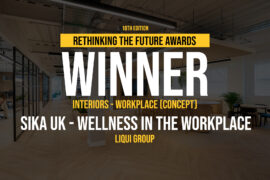Taking over the ground level of a modernist high-rise, the fluidly sculpted limestone façade of Royal de Versailles’ new Rolex Boutique offers a magnetic juxtaposition against the existing steel exterior.
Rethinking The Future Awards 2025
First Award | Commercial (Built)
Project Name: Royal de Versailles’ Rolex Boutique Toronto
Category: Commercial (Built)
Studio Name: PARTISANS
Design Team: Alex Josephson (Lead Architect), Arturo Tedeschi (Computational Designer), Ian Pica Limbaseanu (Project Lead), Tara Selvaraj (Project Coordinator)
Area: n/a
Year: 2023
Location: Toronto, ON, Canada
Consultants: PICCO Engineering (Structural), Entuitive (Building Envelope), Senez Consulting (Code), Burnac (Contractor)
Photography Credits: douplespace photography, Teddy Shropshire
Render Credits: Office ISO
Other Credits: n/a
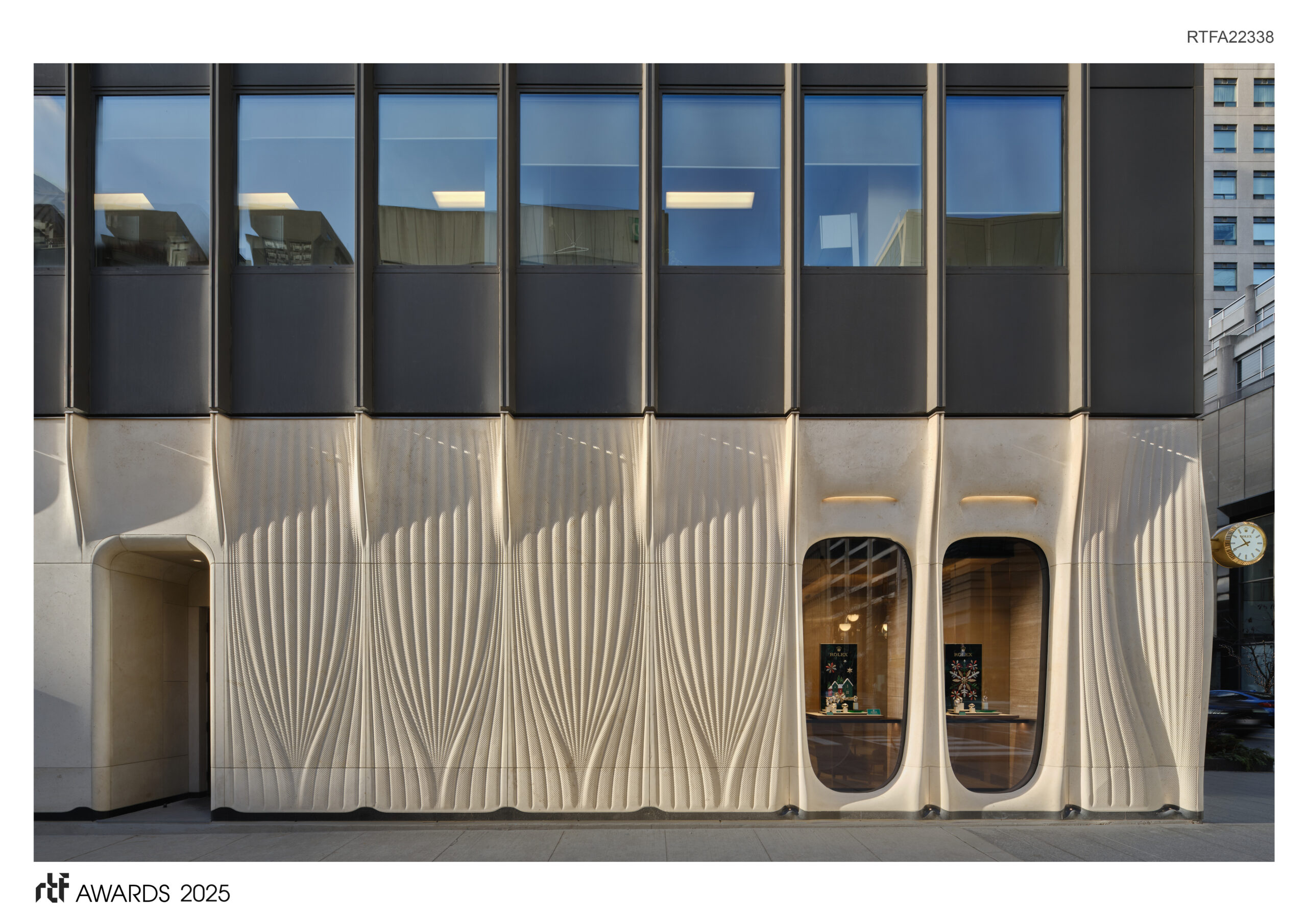
The digitally-fabricated facade underlines a fidelity to craftsmanship and material, embodying the high-precision design and construction that has defined Rolex’s timepieces for over one hundred years. As a 21st century realization of progressive, future-forward design, the unconventional façade boasts a design solution that frees modernist architecture of its rigid constraints.
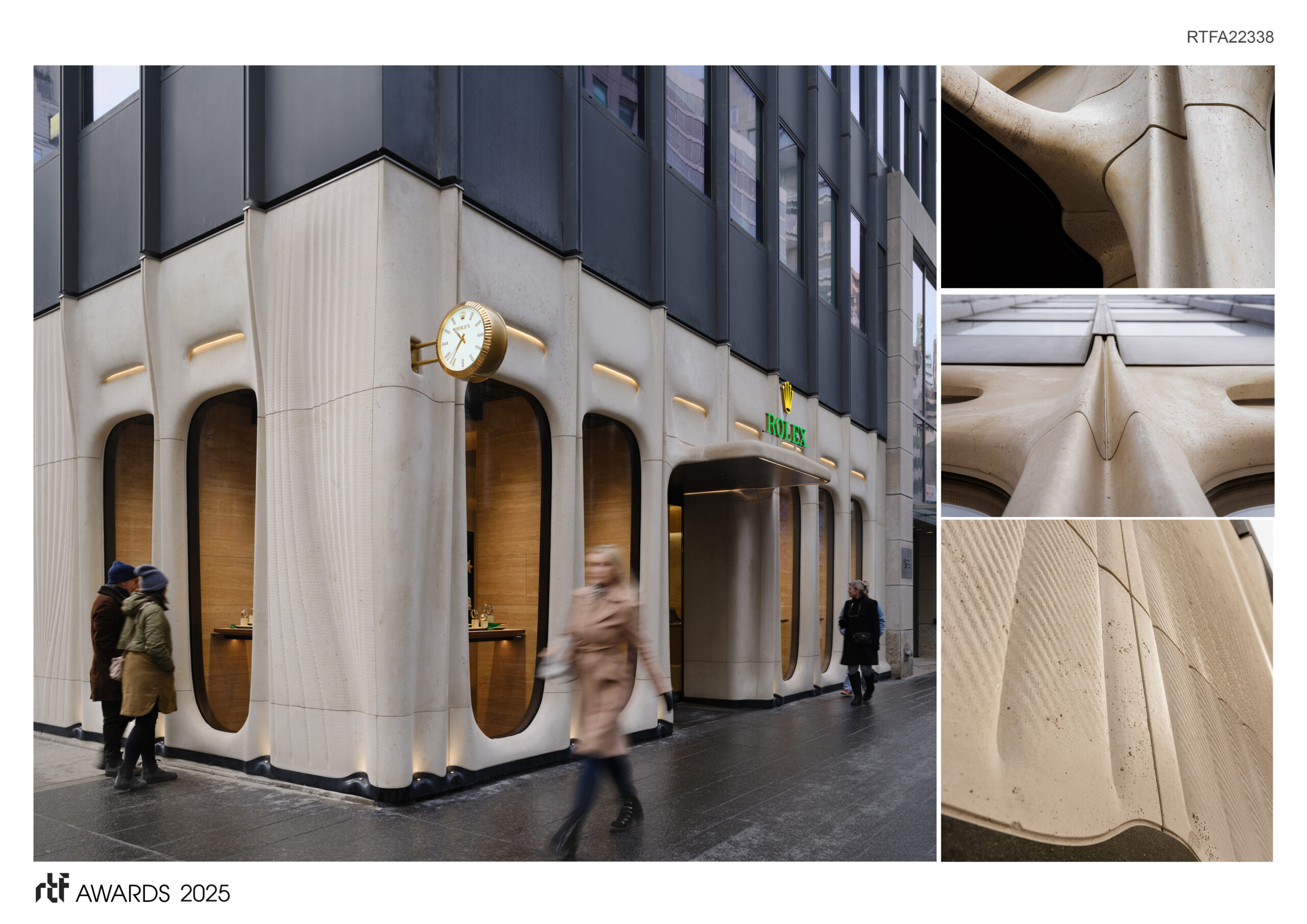
Completed in 1970, the 14-floor modernist building was designed by the Canadian visionary architect and real estate developer John H. Daniels. Emerging from the staid conservatism of the early 20th century, Toronto in the sixties and seventies witnessed a budding architecture seeded in cultural ambition and urban regeneration. Situated in the neighborhood of Yorkville, the high-rise’s design mirrored Toronto’s late 20th century desire for the neighborhood’s revitalization. The Rolex Boutique’s new façade upholds this same zeal for design that is intended to be valued, preserved, and celebrated by future generations – an architecture that can become the heritage sites of tomorrow.
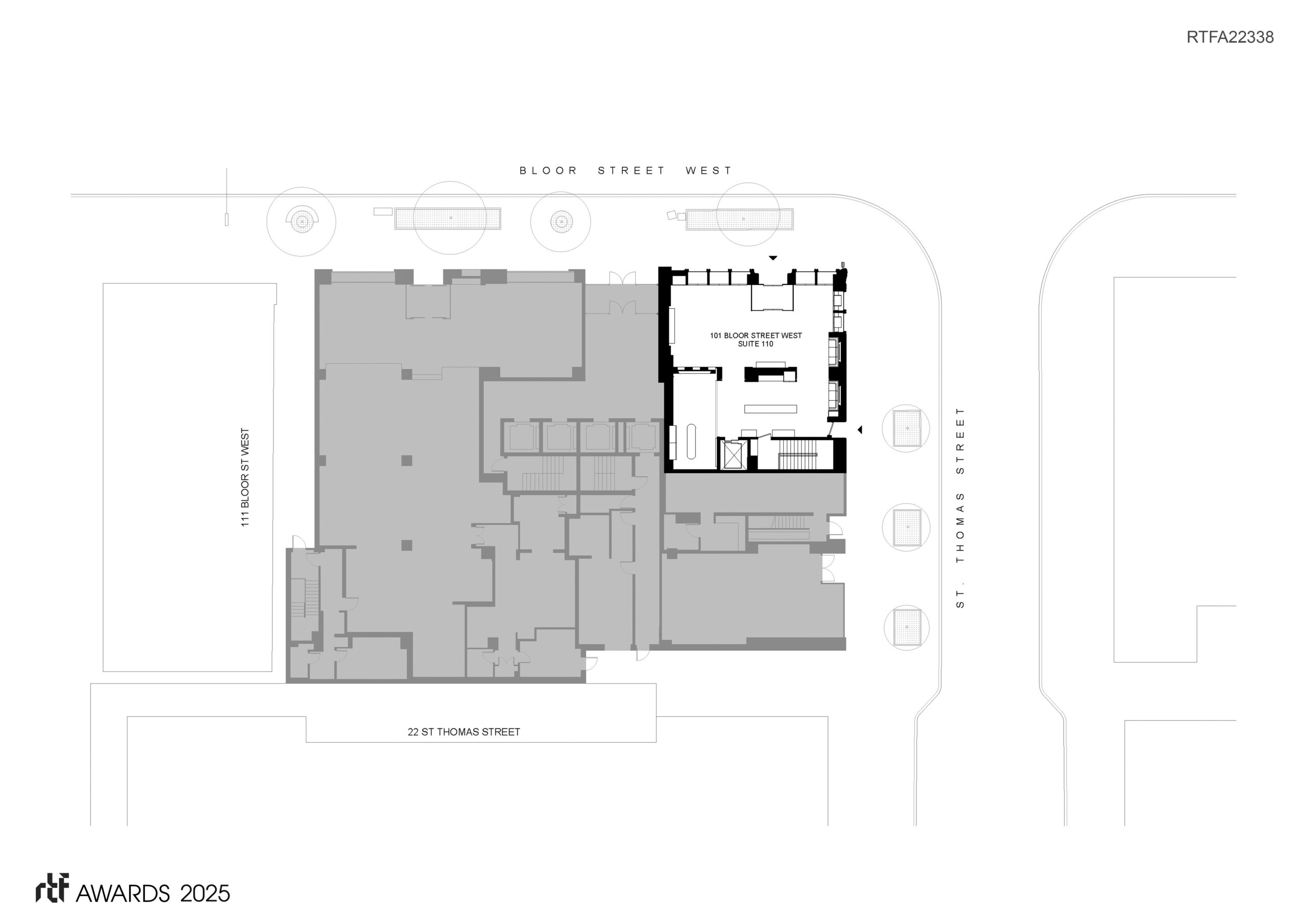
At the intersection of technology and craft, the geometries of the watch are translated into architecture through the exploration of limestone, a durable and sustainable material. The seemingly brutal material is transformed into a delicate and airy medium through elegant contours and smooth bends. The language of the existing modernist façade is seamlessly integrated down into the mullions of the storefront, where the rhythm of the columns recalls the patterns of a watch’s band links, and curvilinear windows reflect polished watch crystals. As the mullions trace down the exterior of the high-rise, they begin to slowly bend into subtle, graceful arcs that capture the essence between the existing structure and the distinctive Rolex geometries.

On the east façade, a CNC parametric composition is carved out of the limestone. The composition was produced by an algorithmic design that was developed in collaboration with computational designer Arturo Tedeschi. The resulting forms follow the geometric logic of the engravings seen on watch face dials, while at the same time interact in a generative manner that is unique to the structure’s elevation. As an inherently layered object, a watch’s most sophisticated features are not readily observable: exquisitely crafted dials offer chromatic plays that are never identical to themselves, and fluted bezels reflect light at different angles, making the watch shimmer with the wrist’s movement. The same philosophy has been applied to the concept and execution of the Boutique’s east façade, whose layered complexity is – as in a Rolex watch – perceived through the subtle vibration that light creates as it grazes the micro-texture crafted on the stone panels. Using algorithmic modeling tools and CNC milling techniques has made it possible to generate a digital model and then realize a tridimensional texture so dense and complex as to give the stone a ‘textile’ appearance.
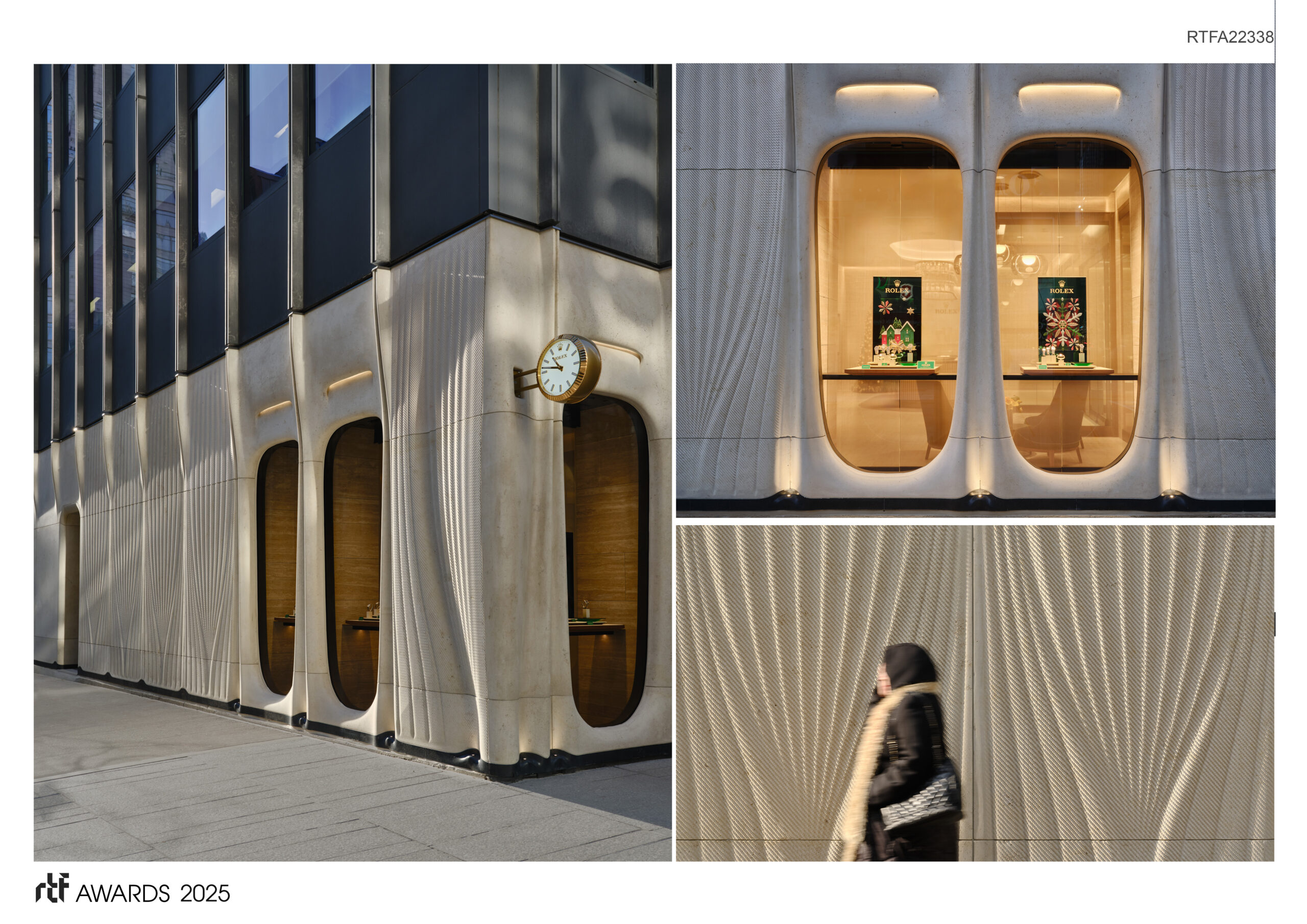
The Rolex Boutique’s façade boasts a harmonious integration of innovative materials that capture the essence of Rolex’s quintessential design and craft. At the same time, the façade anticipates and responds to future-forward needs that accommodate changing values, all while adapting to the city’s existing infrastructure, redefining the future of heritage.

